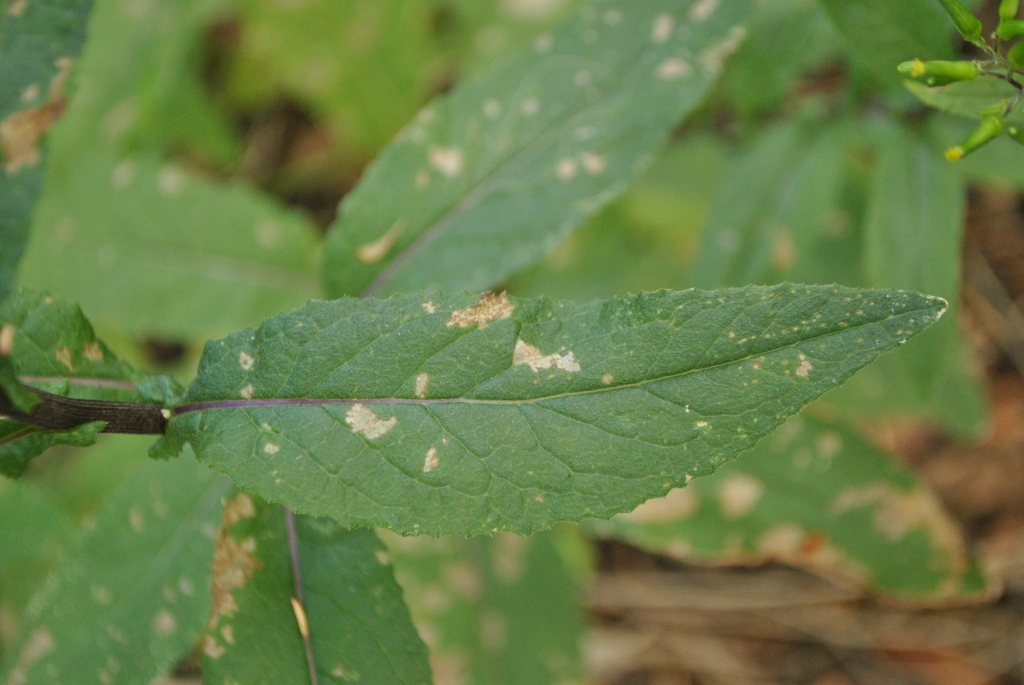Senecio minimus
Poir.Erect, aromatic annual 30–120 cm high; stems usually glabrous, sometimes sparsely cobwebbed when young. Leaves sessile, usually auriculate, elliptic to lanceolate, 6–20 cm long, 1–4 cm wide, more or less regularly dentate or denticulate; upper surface finally glabrous; lower surface glabrous to sparsely cobwebbed. Inflorescence corymbose, often 25 cm across or more, usually with c. 100–400 capitula; capitula non-radiate; involucre cylindric, 6–8.5 mm long, glabrous; bracts 6–10(–11); bracteoles present; florets c. 12–21, bisexual and unisexual. Cypselas cylindric to fusiform, 1.7–2.2 mm long, dark reddish-brown or brown, papillose-hairy in rows, often angled or slightly ribbed in cross-section; pappus of slender hairs 4.5–6 mm long, deciduous. Flowers Dec.–Apr.
LoM, Wim, GleP, Brid, VVP, VRiv, MuF, GipP, OtP, WaP, Gold, CVU, GGr, DunT, NIS, EGL, EGU, WPro, HSF, HNF, OtR, Strz, MonT, HFE, VAlp. A common colonizer following fire or soil disturbance, particularly in cool, moist and/or shaded situations.
Walsh, N.G. (1999). Senecio. In: Walsh, N.G.; Entwisle, T.J., Flora of Victoria Vol. 4, Cornaceae to Asteraceae, pp. 941–965. Inkata Press, Melbourne.
 Spinning
Spinning




